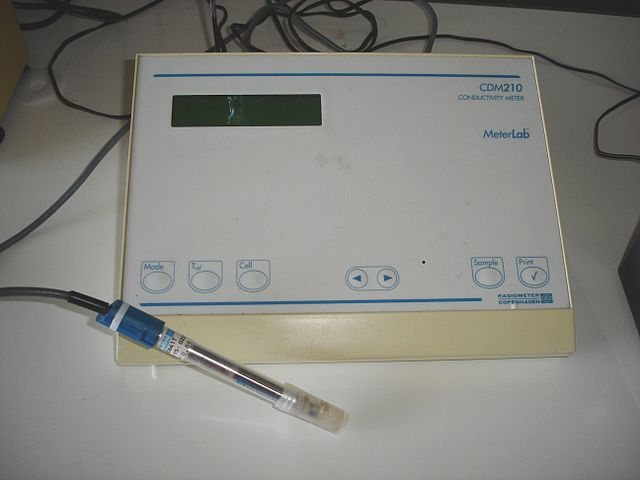 |
The conductivity of a solution of water is highly dependent on its concentration of dissolved salts, and other chemical species that ionize in the solution. Electrical conductivity of water samples is used as an indicator of how salt-free, ion-free, or impurity-free the sample is; the purer the water, the lower the conductivity (the higher the resistivity). Conductivity measurements in water are often reported as specific conductance, relative to the conductivity of pure water at 25 °C. An EC meter is normally used to measure conductivity in a solution.
Material ρ [Ω·m] at 20 °C σ [S/m] at 20 °C
Sea water 2×10^-1 4.8
Drinking water 2×10^1 to 2×10^3 5×10^-4 to 5×10^-2
Deionized water 1.8×10^5 5.5 × 10^−6
แก้ไขเมื่อ 03 พ.ย. 54 05:21:03
แก้ไขเมื่อ 03 พ.ย. 54 05:20:24
| จากคุณ |
:
Sgt.Oat  
|
| เขียนเมื่อ |
:
3 พ.ย. 54 05:18:49
|
|
|
|
 |



 ผมกำลังคิดจะทดลองวัดจริงๆ ผมว่าจะวัด R ระยะต่างๆ ออกมา
ผมกำลังคิดจะทดลองวัดจริงๆ ผมว่าจะวัด R ระยะต่างๆ ออกมา


